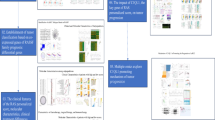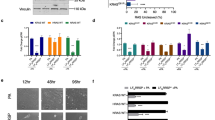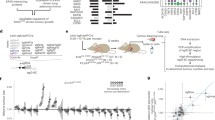Abstract
RASSF1A, a major member of the RASSF1 gene family, is silenced by promoter methylation at a high frequency in a large number of human solid tumors. Controlled expression of RASSF1A reverts the tumorigenic phenotype of several human cancer cell lines. Here we investigated another main isoform, RASSF1C, and compared it with RASSF1A in the gene inactivation test (GIT), based on a tetracycline regulation system. In the small-cell lung cancer (SCLC) line U2020, only RASSF1A has shown growth inhibitory activity in vitro, while in the prostate cell line LNCaP and renal cell carcinoma (RCC) line KRC/Y both RASSF1A and RASSF1C showed similar (approximately 90%) suppressing activity in vitro. Both RASSF1C and RASSF1A suppressed the tumorigenicity of the KRC/Y RCC cell line in SCID mice. Mutations, deletions and loss of expression of RASSF1A and RASSF1C transgenes were identified in all 15 grown SCID tumors. In contrast, the mutant RASSF1A containing Cys65Arg and Val211Ala had reduced growth suppression activity both in vitro and in vivo and did not show any further changes in four grown SCID tumors. In addition, RASSF1C was shown to induce cell cycle arrest in KRC/Y cells. These results strongly imply that like RASSF1A the RASSF1C gene could serve a tumor suppressor function.
This is a preview of subscription content, access via your institution
Access options
Subscribe to this journal
Receive 50 print issues and online access
$259.00 per year
only $5.18 per issue
Buy this article
- Purchase on SpringerLink
- Instant access to full article PDF
Prices may be subject to local taxes which are calculated during checkout







Similar content being viewed by others
References
Agathanggelou A, Honorio S, Macartney DP, Martinez A, Dallol A, Rader J, Fullwood P, Chauhan A, Walker R, Shaw JA, Hosoe S, Lerman MI, Minna JD, Maher ER and Latif F . (2001). Oncogene, 20, 1509–1518.
Alimov A, Kost-Alimova M, Liu J, Li C, Bergerheim U, Imreh S, Klein G and Zabarovsky ER . (2000). Oncogene, 19, 1392–1399.
Burbee DG, Forgacs E, Zochbauer-Muller S, Shivakumar L, Fong K, Gao B, Randle D, Kondo M, Virmani A, Bader S, Sekido Y, Latif F, Milchgrub S, Toyooka S, Gazdar AF, Lerman MI, Zabarovsky E, White M and Minna JD . (2001). J. Natl. Cancer Inst., 93, 691–699.
Dammann R, Li C, Yoon JH, Chin PL, Bates S and Pfeifer GP . (2000). Nat. Genet., 25, 315–319.
Dammann R, Yang G and Pfeifer GP . (2001). Cancer Res., 61, 3103–3109.
Dreijerink K, Braga E, Kuzmin I, Geil L, Duh FM, Angeloni D, Zbar B, Lerman MI, Stanbridge EJ, Minna JD, Protopopov A, Li J, Kashuba V, Klein G and Zabarovsky ER . (2001). Proc. Natl. Acad. Sci. USA, 98, 7504–7509.
Hingorani SR and Tuveson DA . (2003). Genet. Dev., 13, 6–13.
Imreh S, Klein G and Zabarovsky E . (2003). Genes Chromosomes Cancer, 38, 307–321.
Ji L, Nishizaki M, Gao B, Burbee D, Kondo M, Kamibayashi C, Xu K, Atkinson EN, Fang B, Lerman MI, Roth JA and Minna JD . (2002). Cancer Res., 62, 2715–2720.
Kok K, Naylor SL and Buys CH . (1997). Adv. Cancer Res., 71, 27–92.
Kuzmin I, Gillespie JW, Protopopov A, Geil L, Dreijerink K, Yang Y, Vocke CD, Duh F-M, Zabarovsky E, Rhim JS, Emmert-Buck MR, Linehan WM and Lerman ML . (2002). Cancer Res., 62, 3498–3502.
Lee MG, Kim HY, Byun DS, Lee SJ, Lee CH, Kim JI, Chang SG and Chi SG . (2001). Cancer Res., 61, 6688–6692.
Lerman M, Minna J, Sekido Y, Bader S, Burbee D, Fong K, Forgacs E, Gao B, Garner H, Gazdar AF, Girard L, Kamibayashi C, Kondo M, Pande A, Ramalingam V, Randle D, Tomizawa Y, Virmani A, Wistuba I, Macartney D, Honorio S, Maher E, Latif F, Kashuba V, Protopopov A, Li J, Klein G, Zabarovsky E, Duh F-M, Wei M-H, Geil L, Kuzmin I, Ivanov S, Angeloni D, Ivanova A, Zbar B and Johnson BE . (2000). Cancer Res., 60, 6116–6133.
Li J, Protopopov AI, Gizatullin RZ, Kiss C, Kashuba VI, Winberg G, Klein G and Zabarovsky ER . (1999). FEBS Lett., 451, 289–294.
Lo KW, Kwong J, Hui AB, Chan SY, To KF, Chan AS, Chow LS, Teo PM, Johnson PJ and Huang DP . (2001). Cancer Res., 61, 3877–3881.
Maruyama R, Toyooka S, Toyooka KO, Harada K, Virmani AK, Zochbauer-Muller S, Farinas AJ, Vakar-Lopez F, Minna JD, Sagalowsky A, Czerniak B and Gazdar AF . (2001). Cancer Res., 61, 8659–8663.
Ortiz-Vega S, Khokhlatchev A, Nedwidek M, Zhang XfX, Dammann R, Pfeifer GP and Avruch J . (2002). Oncogene, 21, 1381–1390.
Protopopov AI, Kashuba VI, Zabarovska VI, Muravenko OV, Lerman MI, Klein G and Zabarovsky ER . (2003). Cancer Res., 63, 404–412.
Protopopov AI, Li J, Winberg G, Gizatullin RZ, Kashuba VI, Klein G and Zabarovsky ER . (2002). J. Gene Med., 4, 397–406.
Rubins JB, Charboneau D, Alter MD, Bitterman PB and Kratzke RA . (2001). J. Lab. Clin. Med., 138, 101–106.
Sekido Y, Ahmadian M, Wistuba II, Latif F, Bader S, Wei MH, Duh FM, Gazdar AF, Lerman MI and Minna JD . (1998). Oncogene, 16, 3151–3157.
Senchenko V, Liu J, Braga E, Mazurenko N, Loginov W, Seryogin Yu, Bazov I, Protopopov A, Kiseljov F, Kashuba VI, Lerman MI, Klein G and Zabarovsky ER . (2003). Oncogene, 22, 2984–2992.
Senchenko VN, Liu J, Loginov W, Bazov I, Anegeloni D, Seryogin Y, Ermilova V, Kazubskaya T, Garkavtseva R, Zabarovska VI, Kashuba VI, Kisselev LL, Mina JD, Lerman MI, Klein G, Braga EA and Zabarovsky ER . (2004). Oncogene, in press.
Shivakumar L, Minna J, Sakamaki T, Pestell R and White MA . (2002). Mol. Cell. Biol., 22, 4309–4318.
Tomizawa Y, Sekido Y, Kondo M, Gao B, Yokota J, Roche J, Drabkin H, Lerman MI, Gazdar AF and Minna JD . (2001). Proc. Natl. Acad. Sci. USA, 98, 13954–13959.
Tse C, Xiang RH, Bracht T and Naylor SL . (2002). Cancer Res., 62, 542–546.
Vos MD, Ellis CA, Bell A, Birrer MJ and Clark GJ . (2000). J. Biol. Chem., 275, 35669–35672.
Wei MH, Latif F, Bader S, Kashuba V, Chen JY, Duh FM, Sekido Y, Lee CC, Geil L, Kuzmin I, Zabarovsky E, Klein G, Zbar B, Minna JD and Lerman MI . (1996). Cancer Res., 56, 1487–1492.
Xiang R, Davalos AR, Hensel CH, Zhou XJ, Tse C and Naylor SL . (2002). Cancer Res., 62, 2637–2643.
Zabarovsky ER, Boldog F, Thompson T, Scanlon D, Winberg G, Marcsek Z, Erlandsson R, Stanbridge EJ, Klein G and Sumegi J . (1990). Nucleic Acids Res., 18, 6319–6324.
Zabarovsky ER, Lerman MI and Minna JD . (2002). Oncogene, 21, 6915–6935.
Acknowledgements
We thank Ms Laura Geil for editing the manuscript. This work was supported by research grants from the Swedish Cancer Society, the Swedish Research Council, the Swedish Foundation for International Cooperation in Research and Higher Education (STINT), the Swedish Institute, the Royal Swedish Academy of Sciences, INTAS and Karolinska Institute. MIL was funded in toto with funds from the National Cancer Institute, National Institutes of Health, under Contract No. NO1-CO-56000. JDM was supported by Lung Cancer SPORE P50 CA70907, and CA71618.
Author information
Authors and Affiliations
Corresponding author
Rights and permissions
About this article
Cite this article
Li, J., Wang, F., Protopopov, A. et al. Inactivation of RASSF1C during in vivo tumor growth identifies it as a tumor suppressor gene. Oncogene 23, 5941–5949 (2004). https://doi.org/10.1038/sj.onc.1207789
Received:
Revised:
Accepted:
Published:
Issue date:
DOI: https://doi.org/10.1038/sj.onc.1207789
Keywords
This article is cited by
-
Recent progress in mapping the emerging landscape of the small-cell lung cancer genome
Experimental & Molecular Medicine (2019)
-
Tumor suppressor C-RASSF proteins
Cellular and Molecular Life Sciences (2018)
-
Novel lentiviral-inducible transgene expression systems and versatile single-plasmid reporters for in vitro and in vivo cancer biology studies
Cancer Gene Therapy (2015)
-
Decreased Expression of NPRL2 in Renal Cancer Cells is Associated with Unfavourable Pathological, Proliferation and Apoptotic Features
Pathology & Oncology Research (2014)
-
Decreased expression of RASSF1A and up-regulation of RASSF1C is associated with esophageal squamous cell carcinoma
Clinical & Experimental Metastasis (2014)



